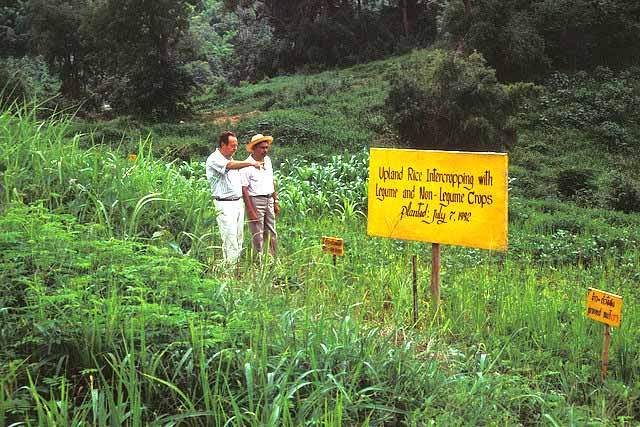Cover crops
 Cover crops or green manure are organic nutrient sources.
Cover crops or green manure are organic nutrient sources.
Green manuring with legumes involves (1) growing the plants, then (2) slashing the crop and (3) leaving it on the soil surface.
Leaving the crop on the soil surface has additional benefits, as it also reduces soil erosion and conserves soil moisture.
The following are common cover crops:
Sesbania
Sesbania is a fast-growing legume with nitrogen-fixing nodules on its stem and roots. It is commonly used as a green manure crop to add nitrogen and organic matter to the soil.
The organic matter and nitrogen produced by Sesbania help improve the soil and subsequent crop growth. Under some circumstances, growing green manures is a cheaper and renewable source of N, especially when inadequate infrastructure and transport mean that other sources of nutrients (e.g., fertilizer) are expensive or not delivered on time.
It takes about 40-60 days for Sesbania to grow.
Fact sheet: How to manage Sesbania in rice










